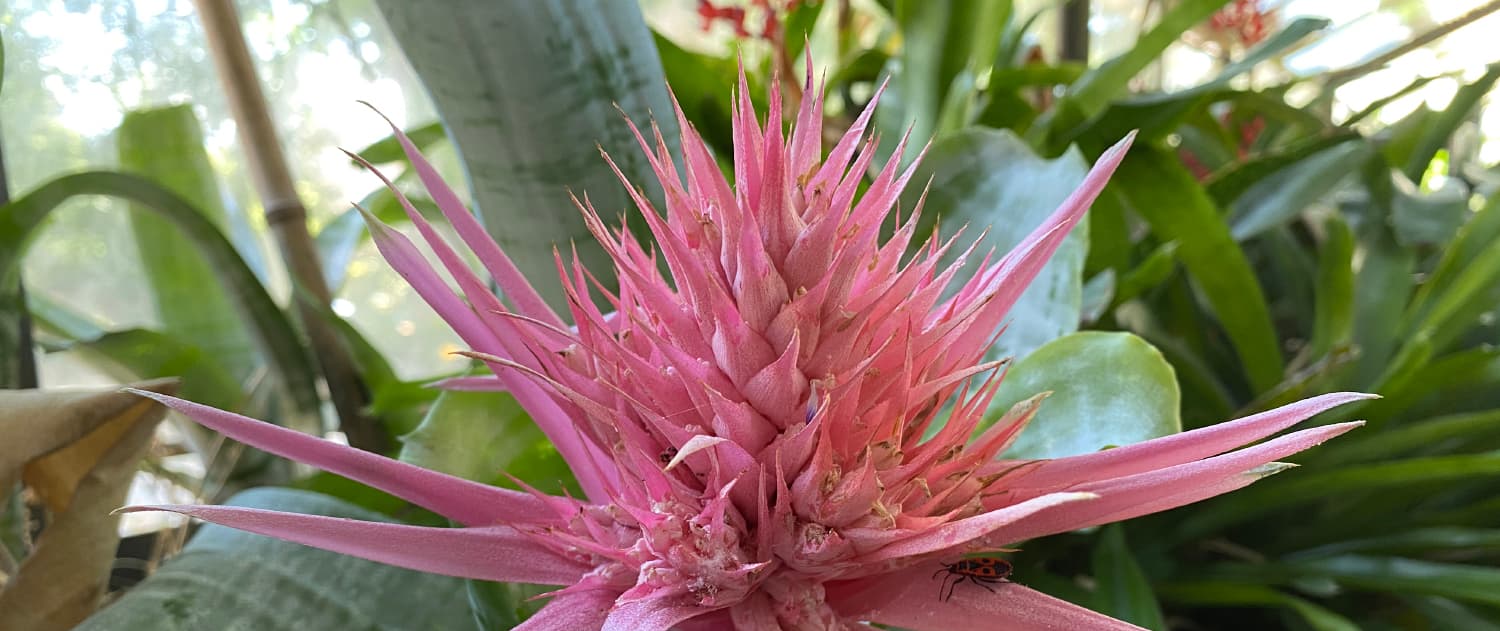Botanical Garden of Florence
Bromeliads
Introduction | Acquatic | Citrus fruits | Trees | Wild edible plants | Araceae family | Wild shrubs | Begonias | Bromeliads | Carnivorous | Cycads | Grasses | Medicinals | Tropical orchids | Palms | Pteridophytes | Roses | Serpentinophytes | Succulent plants | Exhibits
The collection consists of more than 100 specimen collected in the wild in Central and South America in the 70s by the Botanical Garden technician Luciano Giugnolini, who was very active in increasing its “green” inheritance. This collection, which is still being studied and rearranged, is almost entirely housed in a dedicated greenhouse.
The Bromeliaceae family includes species that can be terrestrial, rupicolous and also epiphytic. The leaves are always arranged in a “rosette”, and have a characteristic central 'cup' structure, known with the botanical name of phytotelm, inside of which rainwater can easily been gathered, and that is often used as a refuge by frogs and small invertebrates, creating a veritable inner microecosystem
The roots of these plants are almost always small and nutrient uptake occurs via trichomes, multicellular hairs on the surface of the leaves. The fruit can be a capsule, a berry or a syncarp as it occurs with the pineapple (Ananas comosus), probably the best-known representative of this botanical family, not only for its edible fruit but also for the extraction of bromelain, a substance with pain-relieving and anti-inflammatory action.
Photos


